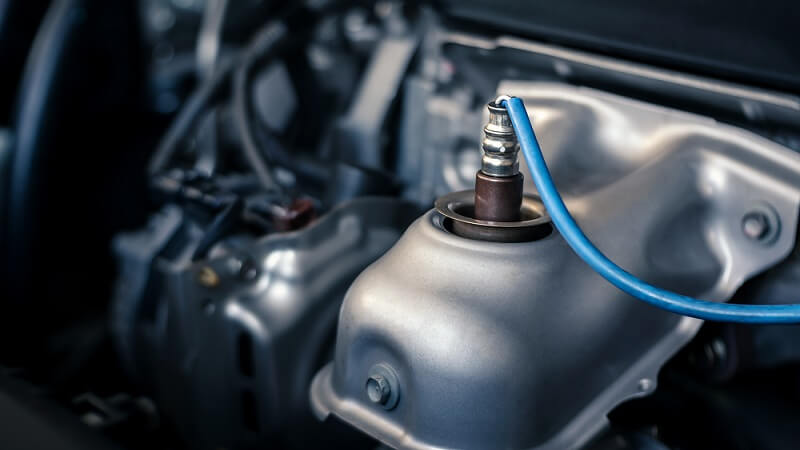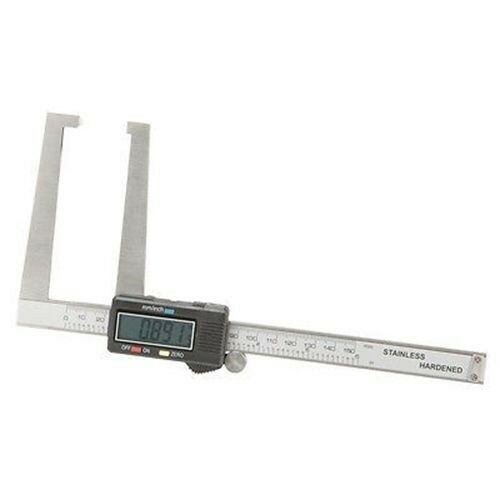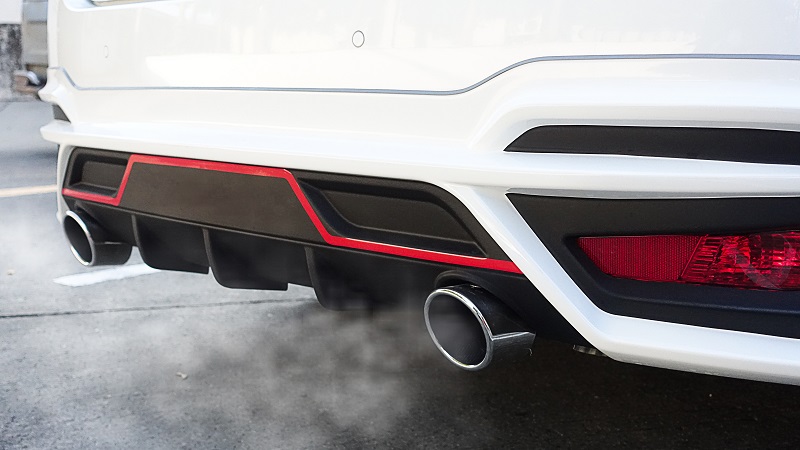If it weren’t for fluids, engines, transmissions, and differentials would come to a grinding halt. Inside all three are metal components that come in contact with each other and the only thing stopping them from self-destructing are lubricating fluids also known as oils. While the components serve different purposes, they make up the drivetrain. Without one, your vehicle is nothing but a rolling shell of cosmetic parts.
It’s no surprise then that every fluid – other than windshield wiper fluid – has to be at a correct level and in good condition for a vehicle to be mechanically sound. Join us as we discuss low transmission fluid symptoms and what causes them. Being able to recognize these can save you a lot of trouble and headaches down the line!
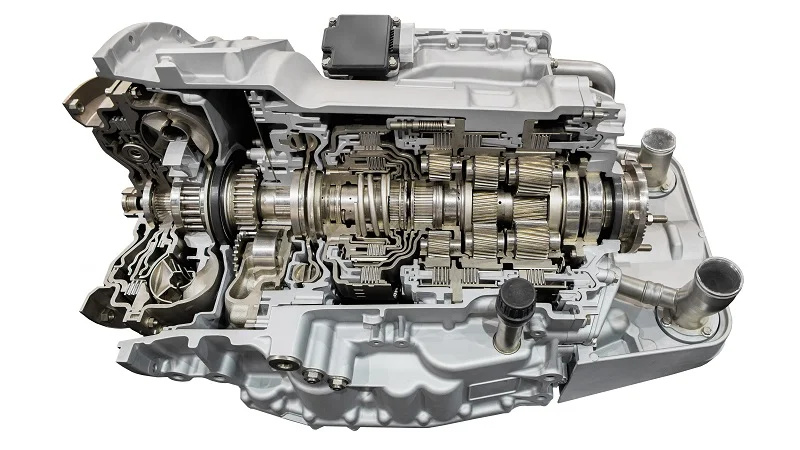
Article updated on 08/01/22. Original publishing date 03/10/21.
How Important Is Transmission Fluid?
Modern transmissions are quite different from the ones used just a few decades ago. These quick-shifting, often multi-clutch transmissions are a lot more complex. The advancements in automatic transmission technology also brought about changes in the fluids they use. Just the sheer amount of varieties available today supports that.
Another development is that transmission fluid now serves a few more purposes than before. All of this makes transmission fluid more important than it has ever been. Here’s exactly what makes transmission fluid so essential.
Lubrication and Cooling
The number-one purpose of transmission fluid is to act as a lubricant. The synchro rings and sliders depend on a slick surface to match speeds when shifting. Like we said before, the metal-on-metal contact that occurs inside a gearbox also requires a lubricant to stop it from damaging itself.
Transmission fluid also acts as a coolant that removes frictional heat. Many vehicles even come equipped with transmission coolers that help cool down the temperature of the fluid even further, which helps keep transmissions at their optimum operating temperatures. This is why periodically flushing the transmission fluid is essential. Its lubrication and cooling properties wear out over time, causing the transmission fluid to change color and become less effective.
Clean and Protect
Almost every transmission fluid consists of a blend of additives that help reduce wear, rust, and corrosion. It does this thanks to dispersants and surfactants whose main purpose is to clean and protect the inside of the transmission. The anti-foam and anti-oxidation contents, meanwhile, work together to curb oxidation.
Power Transfer
While transmission fluids are more complex in composition than conventional hydraulic fluids, they can serve a similar purpose in some cases. One of its primary functions is to transfer power from the engine to the wheels. To carry out the energy transmission, one has to ensure that the viscosity and grade are exactly as recommended by the manufacturer.
Friction Characteristics
While this might sound a bit contradictory to everything mentioned before, transmission fluids are also known to have specific friction characteristics. A wet clutch in an automatic transmission requires a specific amount of friction.
For it to operate as it should, friction must both increase with sliding speed and be high over the whole sliding speed range. This ensures that it doesn’t slip. Transmission fluid technologies have advanced so far that modern blends feature separate additives to reduce friction at low speed and increase friction at high speed to ensure optimal shifting.
Symptoms of Low Transmission Fluid
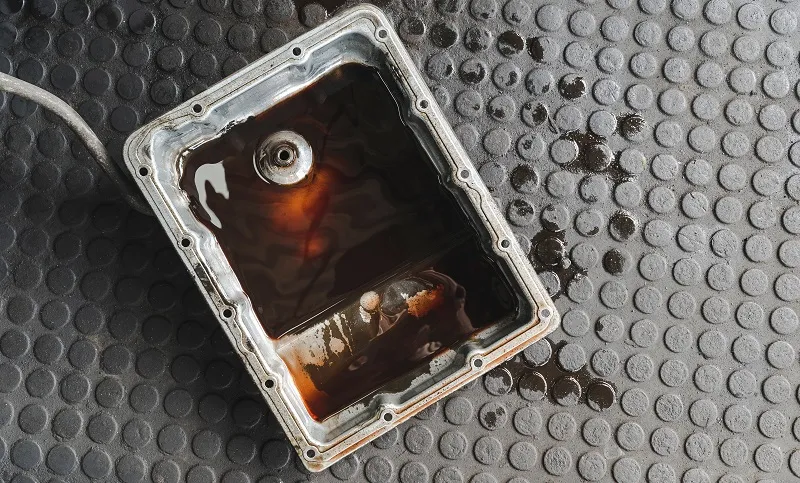
With the main purposes of transmission fluid discussed, it must have become evident that it serves a purpose much greater than just being a lubricant. That’s also why it’s essential that you can recognize low transmission fluid symptoms on your own. To help you out, we’ve put together a list of the most common issues that you might run into as a result of low transmission fluid.
Slipping Gears
One of the most common symptoms of low transmission fluid is a transmission that’s slipping. You can tell your transmission is facing this issue when it is about to shift into a different gear but falls back out of it.
Random upshifts and downshifts and RPM spikes are other indicators. You can also face grinding noises and erratic shifts from the transmission. These symptoms also suggest that the transmission is failing to engage gears as it should, which means there’s a decent chance of damage inside your gearbox.
Additionally, if you continue using the vehicle with these issues, you run the risk of overheating the transmission and doing even more harm.
Overheating Transmission
While we are on the subject of overheating the transmission, and its repercussions, here’s what you need to look out for to avoid it. One of the first things you’ll notice is a loss of power and possibly a burning smell. It can also be accompanied by smoke and erratic shifts.
These are transparent tell-tale signs of transmission failure. If ignored, an overheating transmission will begin affecting other important parts of the drivetrain.
Slow Gear Shifts
Another low transmission fluid symptom is slow gear shifts. Not everyone will be able to notice this symptom immediately, but it will become easily identifiable once you begin noticing the 2-3 second pause that occurs between gear shifts.
As mentioned before, transmission fluid also acts as hydraulic fluid and when there isn’t a sufficient amount of it, there isn’t enough pressure to carry out gear shifts.
Irregular Shifting
What you may also notice as a symptom of low transmission fluid is irregular shifting. Given the importance of the fluid, it shouldn’t be a surprise that a lack of it causes inconsistencies in shifting performance. This includes the timing of the shifts and the smoothness of each shift. Delayed or even sped-up shifts can be considered as irregularities with the transmission.
Locked Transmission
If your vehicle is running severely low transmission fluid, there is a high probability of it refusing to shift completely. Low or empty transmission fluid can cause the transmission to lock up, so to speak. While the issue can be temporarily resolved by refilling the transmission with the appropriate fluid, it will require a proper check-up to figure out the cause of the low transmission fluid.
Complete Failure
The absolute worst of the low transmission fluid symptoms and causes is a complete failure of the unit. An easy way to tell your transmission has failed is if any of the above-stated symptoms continue occurring even after topping up the transmission fluid.
This is the worst-case scenario and will require you to rebuild or replace the transmission altogether. The best way to avoid this is by knowing what causes low transmission fluid and staying mindful of it.
What Causes Low Transmission Fluid Symptoms?

Unlike an engine, transmissions can’t burn fluids. What this means is that there’s only one way you could lose it, and it’s leakage. For example, the ZF 6HP26 transmission found on numerous BMWs is known to spring a leak on the oil pan, which can be prevented through regular service. If your vehicle is suffering from low transmission fluid, it’s most likely making its way out of the unit in one of the following ways.
One of the obvious causes of low transmission fluid is if its oil pan has a crack or puncture. Another reason could be a gasket failure.
That’s not all, there’s also the likelihood of the fluid line or axle seal cracking or failing, resulting in what will most likely be a slow leak. A slow leak is as dangerous as a quick one if left unnoticed for an extended amount of time.
Lastly, if your transmission is equipped with a torque converter, it could be the reason for the leak. A torque converter works as a pump and if it develops a crack, it’ll end up leaking transmission fluid. Bad bearings inside the torque converter can also be the reason for a leak.
Can You Drive a Car With Low Transmission Fluid?
If you encounter any of the more drastic low transmission fluid symptoms mentioned above, it’s highly recommended to not drive your vehicle until it’s inspected. However, if you’ve only begun noticing one of the minor symptoms like a small pause between gear shifts, you could drive your vehicle to the workshop. That being said, you are still at the risk of causing more damage to the transmission.
The best way to avoid reaching the stage where the damage to your transmission is irreversible is quite simple, and a good habit to have. When driving out of your usual parking space, make a habit to look at the ground where your vehicle was parked. This way you’ll know if you have a leaky transmission well in advance.
How to Check the Transmission Fluid?

If you notice any symptoms of low transmission fluid mentioned above, check the fluid level using the dipstick to see if the fluid level matches the one mentioned in the owner’s manual. Make sure your vehicle is parked on a flat surface when you are doing this. If your vehicle doesn’t have a dipstick, read your owner’s manual for instructions on how to go about doing so.
Make Sure You Have the Correct Transmission Fluid!
With modern transmission, it’s extremely important to get the correct transmission fluid. Any mix-up with the grade and viscosity can end up giving you a lot of trouble. You can make sure you are getting the correct transmission fluid for your vehicle right here!
We at Newparts.com offer transmission fluid for almost all European vehicles! All you need to do is visit the Shop section, choose the make and model of your car, and we’ll present you with parts that perfectly match your ride!


